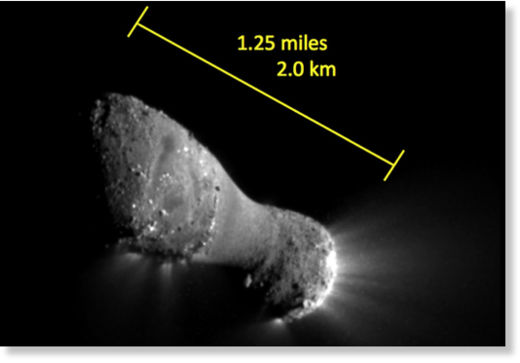
© NASAComet Hartley, as imaged by NASA's EPOXI spacecraft.
For the first time, researchers have detected ocean-like water in a comet - new evidence supporting the theory comets delivered a significant portion of Earth's oceans.
"Life would not exist on Earth without liquid water, and so the questions of how and when the oceans got here is a fundamental one," says Ted Bergin, an astronomy professor at the
University of Michigan. "It's a big puzzle and these new findings are an important piece."
The findings are reported in the journal
Nature.
Bergin is a co-investigator on HiFi, the Heterodyne Instrument for the Infrared on the Hershel Space Observatory. With measurements from HiFi, the researchers found that the ice on a comet called Hartley 2 has the same chemical composition as our oceans. Both have similar D/H ratios. The D/H ratio is the proportion of deuterium, or heavy hydrogen, in the water. A deuterium atom is a hydrogen with an extra neutron in its nucleus.
"We were all surprised," Bergin says.
Six other comets HiFi measured in recent years had a much different D/H ratio than our oceans, meaning similar comets could not have been responsible for more than 10 percent of Earth's water.
The astronomers hypothesize that Hartley 2 was born in a different part of the solar system than the other six. Hartley most likely formed in the Kuiper belt, which starts near Pluto at about 30 times farther from the Sun than the Earth is. The other six hail from the Oort Cloud more than 5,000 times farther out.
The source of earth's oceans has been a subject for debate among astronomers for decades. Until now, asteroids were thought to have provided most of the water. Now, however, Herschel has shown that at least one comet does have ocean-like water.
"The results show that the amount of material out there that could have contributed to Earth's oceans is perhaps larger than we thought," Bergin says.
Herschel, a European Space Agency mission with NASA participation, is an orbiting telescope that allows astronomers to observe at the far-infrared wavelengths where organic molecules and water emit their chemical signatures.
How they keep blindly following that model of how they think the solar system formed. They leave way to too many questions unasked and unthought